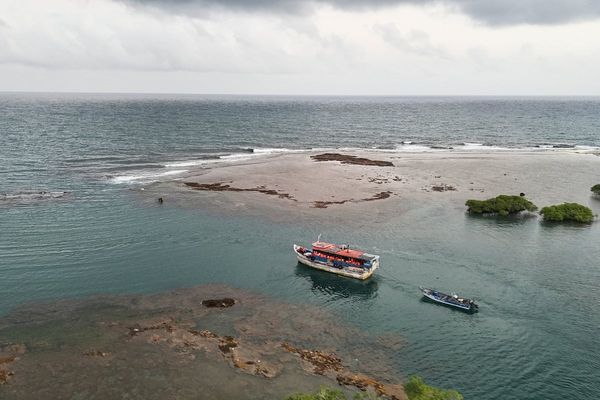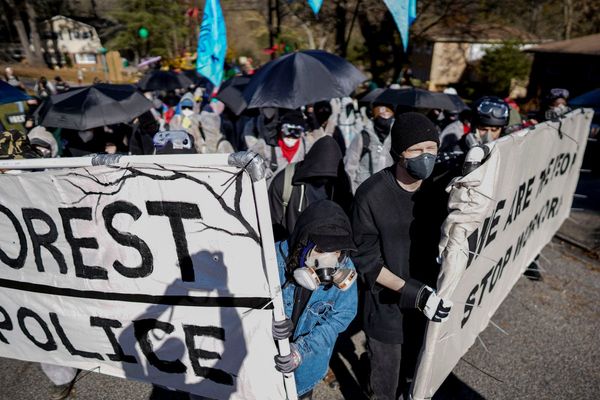For years, many states have set ambitious goals and incentives to promote renewable electricity projects. Now, more of those states are turning their attention to the transmission lines, substations and transformers needed to get that electricity from wind farms and solar plants into homes and businesses.
Congress has invested billions in boosting clean energy. But the money won’t lower emissions as much as predicted without “more than doubling” the last decade’s rate of grid expansion, Princeton University researchers noted last year. That expansion is needed to support the new renewable energy projects coming online, as well as the growing number of electric vehicles, heat pumps and other technologies requiring electricity.
Jon Wellinghoff, former chair of the Federal Energy Regulatory Commission and the CEO and founder of GridPolicy Consulting, which works with governments and companies to support clean energy deployment, agreed that expanding the grid needs to be a top priority.
“In some areas, there are significant issues with the number of renewables wanting to interconnect into the grid and the timing it is taking to get those renewables interconnected,” Wellinghoff said.
While some states haven’t set renewable energy mandates, those that have will need to remake the grid to meet them. Some are crafting policies to streamline permitting for transmission lines. Others are pursuing partnerships with neighboring states to strengthen regional connections. And some are working to ensure that long-planned offshore wind projects can bring their electricity ashore.
“There's definitely a huge need for investment and development across the board for both transmission and distribution infrastructure,” said Clara Summers, climate and energy program manager with the National Caucus of Environmental Legislators, a forum for state lawmakers.
But it won’t be easy. It can take much longer to plan, permit and build transmission lines and other distribution infrastructure than to launch solar and wind operations. And while recent federal legislation includes billions for grid upgrades and planning, the states’ role in spending that money is still being determined.
A 2019 analysis by global consulting group Wood Mackenzie found that reaching 100% renewable electricity would require adding 200,000 miles of high-voltage transmission lines — doubling the existing total — at a cost of $700 billion. A complex web of independent system operators, state regulators and utility companies oversee the planning and construction of new grid infrastructure, with frequent disagreements about who should bear the cost.
In Washington state, leaders are working to connect wind and solar projects in the state’s arid eastern region with population centers west of the Cascade Mountains. Gov. Jay Inslee, a Democrat, is proposing a bill that would speed up permitting for high-capacity transmission projects, placing them under the oversight of the state’s Energy Facility Site Evaluation Council.
“This doesn’t lessen the stringency of how projects are reviewed, but it streamlines it into one body that is going to be doing those reviews rather than one county and city after the next,” said Anna Lising, Inslee’s senior climate adviser.
The bill also would require utilities to conduct transmission planning on a 20-year basis, rather than 10 years, and base that planning on clean energy policy requirements rather than historical figures.
Some advocates say more states need to take a similar approach, directing utilities and grid operators to build transmission infrastructure that aligns with states’ clean energy plans.
“Whether it's a regulator or a legislator, making sure that the grid operator is planning a grid that is going to accommodate the state goals within the timeframe that the state wants them to happen is really important,” said Beth Soholt, executive director of the Clean Grid Alliance, a nonprofit that advocates for renewable energy policy in the Midwest.
Lawmakers in Maryland passed a climate law last year that, among other provisions, directs the state’s Public Service Commission to incorporate state goals of decarbonization, renewable energy, equity and other factors into its distribution system planning process.
Some states, particularly on the East Coast, are planning transmission infrastructure for offshore wind projects in the permitting and construction phase. New Jersey lawmakers passed a law in 2021 allowing regulators to overrule local governments that attempt to block offshore wind farms from connecting to the grid. Some communities have raised concerns about sightlines and commercial fishing.
City council members in Ocean City, New Jersey, for example, have opposed construction of an offshore wind project by Danish developer Ørsted. In a 2021 resolution opposing the bill, they said it “would severely affect the ability of local governments to exercise home rule.” In other regions, transmission expansions also may face opposition from local governments seeking to stymie renewable projects, fearing their effects on existing industries, local aesthetics or agriculture.
“The show must go on,” said New Jersey state Sen. Bob Smith, a Democrat who chairs the Environment and Energy Committee, told Stateline last year. “We are not stopping wind, because we need it to stop the end of the world.”
In New Mexico, state leaders have established a state Renewable Energy Transmission Authority to facilitate electric transmission and storage infrastructure. The agency, established in 2007, has seen its work accelerate in recent years due to the state’s 2019 clean energy law.
“We’re unlocking trapped wind and solar resources that are far away from our population centers,” said Fernando Martinez, the organization’s executive director. The agency provides tax incentives, helps find suitable sites for infrastructure and can issue and sell bonds, according to Martinez.
New Mexico, which had not seen a transmission system upgrade since 1986, recently completed a major transmission line connecting a large wind farm to the grid, with more transmission projects under construction.
Martinez called the New Mexico agency a model for other states, and in 2021, Colorado lawmakers established an electric transmission authority with a similar structure.
In Nevada, legislators passed a bill last session to accelerate the construction of more than 600 miles of new transmission lines. Assemblymember Howard Watts, a Democrat who co-sponsored the measure, said it established a clear regulatory process that will speed up completion of the project.
“This will improve our ability to tap into various renewable resources that are located across the state and get them where they need to go,” he said. “By providing different corridors, we have a huge opportunity to be self-sufficient and also go past that and provide a clean energy resource that neighboring states can take advantage of as well.”
The Nevada legislature overwhelmingly approved the bill, but the conservation nonprofit Basin and Range Watch argued that the expansion of transmission lines “will harm wildlife, wilderness values, hurt private property and change the character of rural Nevada.”
Other transmission projects have drawn local pushback, including a 145-mile transmission line that would carry electricity from Canadian hydropower operations to New England. The line has been the subject of yearslong political and legal fights in Maine, where many residents fear it would damage the region’s woods and tourism industry.
Connections with neighboring states have drawn increasing interest in the West. The Nevada law gives the state until 2030 to join a competitive wholesale energy market in the region, known as a regional transmission organization or RTO. Colorado lawmakers also passed a law in 2021 requiring transmission utilities to join an RTO by 2030.
“We've got 38 grids across 11 states in the Western U.S.,” said state Sen. Chris Hansen, a Democrat who sponsored the Colorado measure. “It makes no sense. If you were to design a system from scratch, there's no way you'd end up with what we have right now. There's a huge win-win available here if we can stitch together the Western grid.”
While power systems across the West do transfer electricity back and forth, only in California are they part of a larger cooperation agreement that oversees planning and resource sharing. The California Independent System Operator manages the flow of electricity over 80% of the state across 26,000 circuit miles of transmission lines. Experts say that a regional system would be much more efficient and make states’ clean energy goals more attainable.
“The best battery that is out there is the grid — to have solar in California complemented by wind in Wyoming and transmission between the two,” said Christina Hayes, executive director of Americans for a Clean Energy Grid, a coalition that advocates for expansion and modernization of the nation’s transmission system.
One sticking point is that the California Independent System Operator, which could hypothetically incorporate other states into a regionwide RTO, is currently governed by a five-member board appointed by that state’s governor. Since prospective members would likely want their own representation in the oversight of an RTO, California lawmakers are currently looking at other governance options to give parity to other states that seek to join.
“This could be really beneficial to all of us,” said Assemblymember Chris Holden, a Democrat. “California could deliver excess solar power to other states rather than curtail it, and at other times we may be able to import wind and solar power from other states.”
Holden sponsored legislation, which passed last year, directing the Independent System Operator to produce a report on the impacts of regional grid cooperation, which he said will help lawmakers better understand the issue and send a “market signal” to neighboring states that California is serious about an RTO.
“An interconnected grid is a more resilient grid,” said Summers, with the environmental lawmakers group. “You really unlock the ability to move clean energy around, and that addresses a lot of the intermittency concerns people have, because the sun will be shining somewhere, and the wind will be blowing somewhere.”
———







